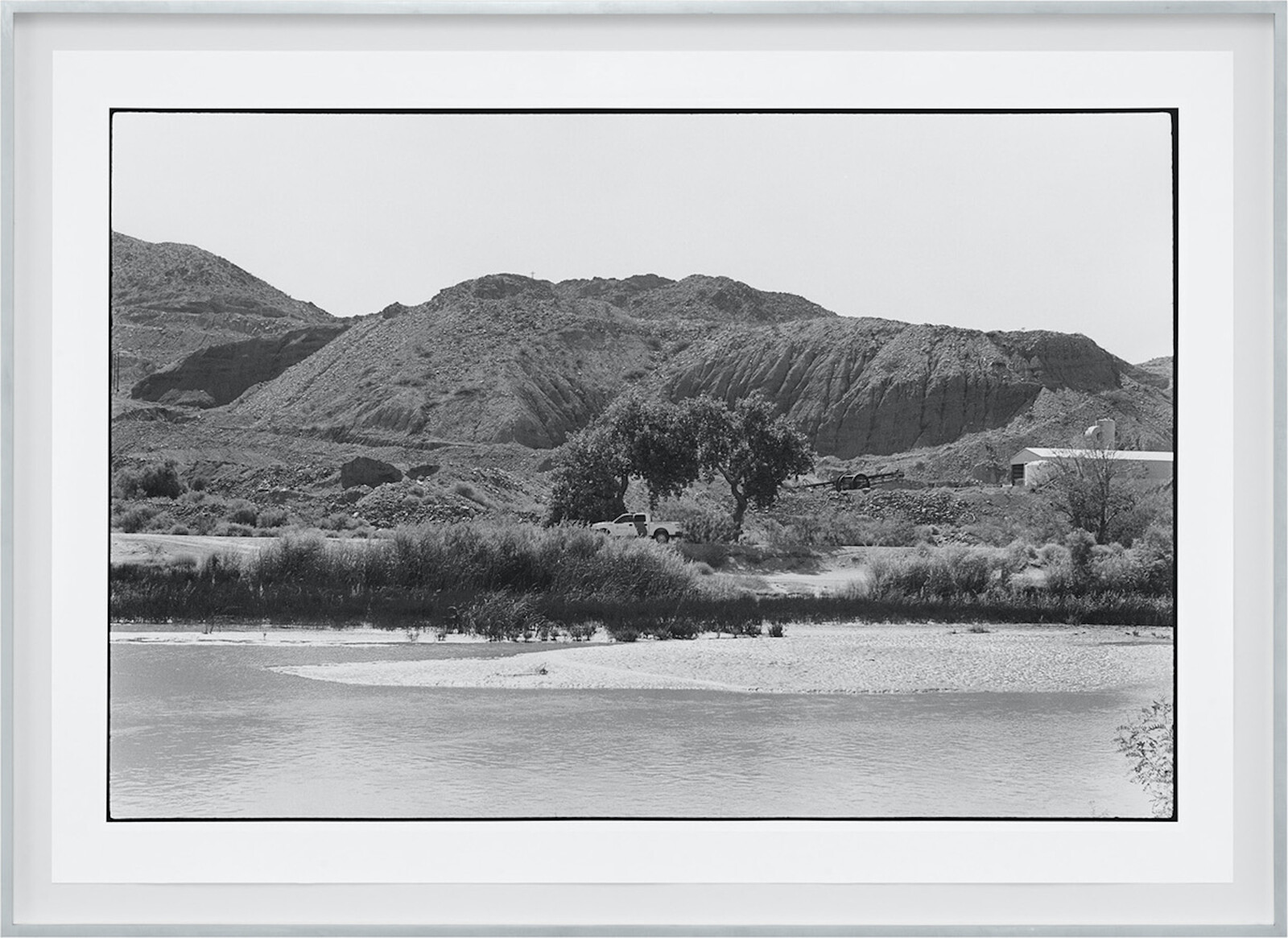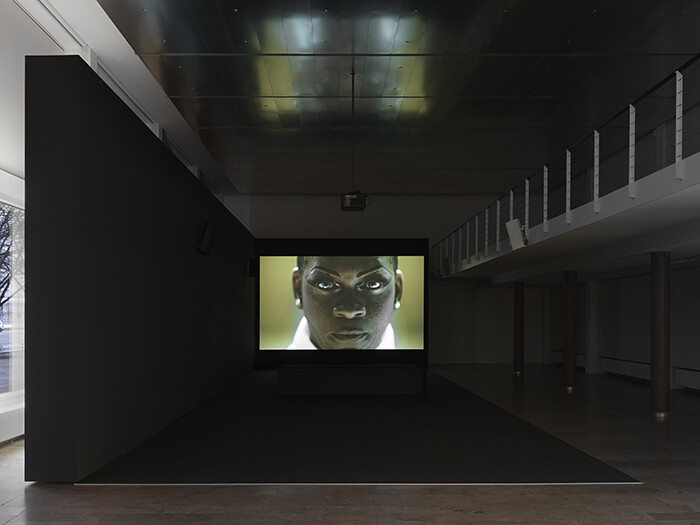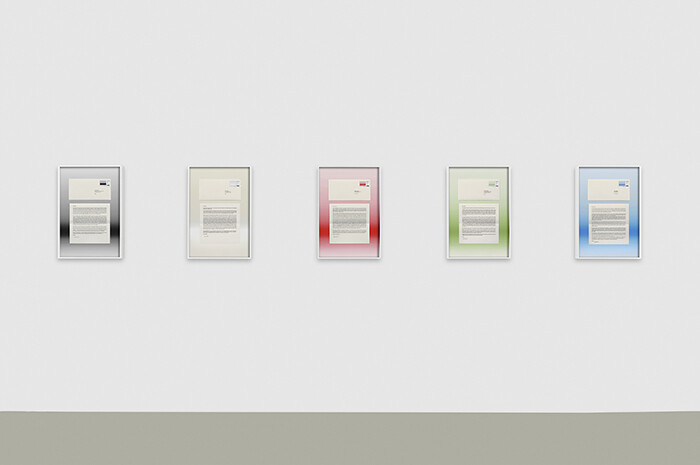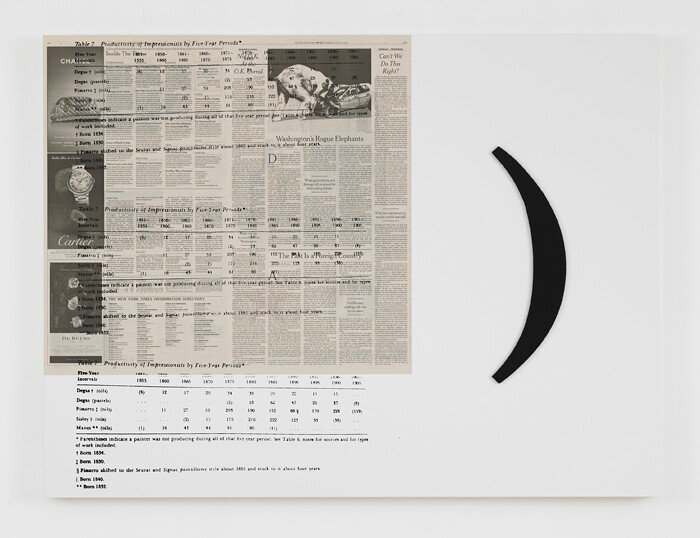Categories
Subjects
Authors
Artists
Venues
Locations
Calendar
Filter
Done
April 15, 2022 – Review
Zoe Leonard’s “A View from the Levee”
Jesi Khadivi

Art historian Darby English describes humans’ relationship to the natural world as “an interchange of flow and force,” a phrase that also evokes the way geological forces are harnessed to mark political boundaries. Zoe Leonard’s epic photographic work Al río / To the River, created between 2016 and 2022, comprises approximately 500 black-and-white and 50 color photographs of the river that marks the border between the United States of America and Estados Unidos Mexicanos. Called the Rio Grande by Americans and the Rio Bravo by Mexicans, the numerous violent modifications the river has undergone testify to this entanglement of flow and force: over the last century engineers have forcibly straightened and shortened its meandering natural course by nearly 67 miles, lining its base in concrete so that it may never shift its channel again. The river’s edge is alternately home to cities, towns, border patrols and facilities, grazing animals, and open expanses. In some places it flows wide and mighty, while in others no water runs through, and its cement embankments form what scholar C. J. Alvarez describes as “a massive trapezoidal canvas for graffiti.”
Before Leonard zooms out to capture this interchange, she zooms in. Upon entering “A View …
February 25, 2015 – Review
Yael Bartana
Kirsty Bell

Having transformed Capitain Petzel’s glass showroom gallery into a dark, carpeted two-floor Kino, Yael Bartana went on to invert heaven and hell. Inferno (2013), screening on the ground floor, was all fire, brimstone, death and destruction, while True Finn (2014), in the basement below, was a peaceful haven of snowy landscapes and wood-paneled interiors, in which the workings of compromise, tolerance, and freedom of speech were played out. The first film is a mock biblical epic—a “historical pre-enactment” that fuses fact and fiction by staging the destruction of a replica of Solomon’s Temple which, incredibly enough, was recently built in downtown São Paulo by an evangelical Neo-Pentecostal church. In the second film, we follow the progress of eight Finnish participants from different ethnic backgrounds brought to a remote house in the countryside in order to determine which of them is the “True Finn.” Like the Israeli artist’s previous films, these works both traffic in polemic and provocation, but are nonetheless rooted in the political realities of their respective sites. In both, Bartana plays devil’s advocate, zeroing in on the nub of the dilemma—whether adversarial claims on religious history, or on national identity—and taking it to a logical, if extreme, conclusion. …
January 9, 2014 – Review
Natalie Czech’s “I Cannot Repeat What I Hear”
Kerstin Stakemeier

Natalie Czech’s first exhibition at Capitain Petzel is an exemplary case of thought rendered in the medium of photography. In her series “Poems by Repetition” and “Voyelles” (both 2013), Czech employs photography as a means of inhabiting a range of artistic literary genres—poetry, journalistic media, lyrics from popular music, and epistolary writing. Reaching beyond the modernist idea of a given genre’s imperative to immanent progress, she creates photographic works that are derived from text-based sources, and simultaneously diverge from strict photographic formalisms. The exhibition’s title, “I Cannot Repeat What I Hear,” stresses the visual embodiment of language against its audible forms.
Voyelles I and II (2013), shown in the upper gallery, each consist of five works. Here, Czech seems to test out a transfer of written synaesthesia into photography. The series title is taken from Arthur Rimbaud’s 1871 sonnet, which begins with the line: “A noir, E blanc, I rouge, U vert, O bleu: voyelles.” Assigning a color to each vowel, Rimbaud ferociously spelled out seen, felt, and lived intensities in the poem, expanding on those five synaesthetic modalities in its subsequent lines. Czech asked ten different authors, poets, curators, and artists to each write a one-page letter to themselves in …
October 11, 2011 – Review
Blake Rayne’s "Shade Subscription"
Bruno Macaes

An autumnal smiley face—made out of two bicycle wheels, some tree twigs, and some dry leaves (freckles from summer?)—is the first thing greeting the viewer of Blake Rayne’s “Shade Subscription.” Once we go behind the wall abutting this work, named after the artist himself, Blake (2011), it seems only appropriate that we should now come upon the hapless bicycle frame, turned upside down: a true downer, a bike going nowhere.
The logic of the readymade dictates as much, as Rayne illustrates with his series of paintings Rest in Shade (2011). There are literally endless issues of the New York Times that could have been used here, a new one being produced every day. But Rayne has chosen to show us only the reverse side of the front page, which has its daily constants: Chanel, for instance, has a monopoly on the upper-left-hand corner of page two. But by superimposing these newspaper pages with a scholarly graph showing us the number of paintings produced each decade by some famous Impressionists, Rayne wants to suggest that the same logic—endless production across a spectrum of variations—was at play in their work. On this point the current show adds an intriguing suggestion. Perhaps there is …